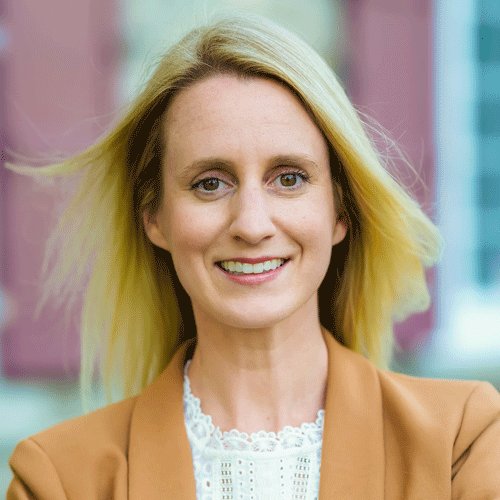Blog, Community Implementation
Votre communauté est-elle économe en énergie?
When you think of QUEST’s vision, you may conjure up images of energy-efficient buildings, district energy networks, distributed energy resources, and compact development patterns that prioritize transit and active transportation. If you’ve been following us for some time, you may even associate these images with what we call Smart Energy Communities.
While the Smart Energy Communities concept has evolved over the years, at its core it represents the end state of a truly integrated approach to planning for and managing energy at the local level. Inspired by a model coined by the Dutch called “The Trias Energetica,” we outlined 4 characteristics of a Smart Energy Community:
They prioritize energy efficiency
They integrate conventional energy networks
They harness local energy opportunities
They integrate energy into land use planning
In 2012 we took this further and developed a suite of guiding technical and policy principles for Smart Energy Communities, which were formally endorsed by the Council of Energy Ministers. While these principles have stood the test of time and continue to shape supportive policies and plans, they do not provide consensus on what a Smart Energy Community looks like in practice, nor do they provide an approach for measuring success.
In 2017, we partnered with Pollution Probe and set out to address this challenge. We started by developing a draft set of indicators that describe the key components of a Smart Energy Community. The indicators focus on the local capacity and resources that need to be in place, as well as the effective management and integration of infrastructure to use, move and source energy as efficiently as possible. Through research on best practices of plans, policies, processes, and programs, we then developed a comprehensive scoring framework that measures the presence of each indicator.
Together, the indicators and scoring framework create a clearer picture of what a Smart Energy Community looks like, and provide a powerful benchmarking tool that communities across Canada can use to track their progress on becoming one.
Fast forward to the present – after more than two years and a number of (i.e. almost 20!) iterations, we are in the final stages of finalizing the tool and publishing the results. Today, we are pleased to present the ten new indicators of a Smart Energy Community:
Governance models support cross-sector leadership
Staff capacity is in place
Information and data is available to support decision making and accountability
Funding and financial mechanisms support local energy initiatives
Community energy planning is structured to support implementation
Land use planning supports energy and climate resilience objectives
Energy delivery systems are optimized to improve efficiency, ensure reliability, and local energy integration
Water and waste management promotes conservation, energy efficiency, and energy recovery
Mobility and fleet planning prioritizes active transportation, public transportation, and alternative fuel use
Buildings are efficient and incorporate local energy options
Of course, we didn’t come up with all of this on our own. The project team travelled from coast to coast to coast and met with municipal and utility staff in nine pilot communities across Canada. Their feedback was integral to the process of refining our methodology and identifying best practices. These communities are an inspiration to our project team because they exemplify our vision of Canada as a nation of Smart Energy Communities. Here is a snapshot of just some of the initiatives we learned about:
Spotlight on the Smart Energy Benchmark Pilot Communities
Beaconsfield, Quebec
Nestled on the shores of Lake Saint Louis, the City of Beaconsfield is graced with prime waterfront green space. Beaconsfield has built a strong process for engaging with its residents. In addition to the use of Advisory Committees, the city uses a digital portal, bciti, to receive community feedback on issues early and determine more extensive engagement activities. This has included several workshops for the development of Beaconsfield’s community energy plan under the i3P project and public information sessions, open houses, and public hearings for the development of their Report on land use planning and evolving housing needs.
Photo Credit
Town of Beaconsfield, Quebec
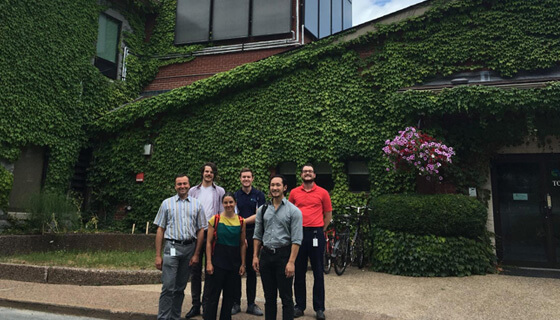
Bridgewater, Nova Scotia
Over the past decade, Bridgewater has grown a reputation for embracing sustainable municipal practices and has been recognized nationally as a leader in forward-thinking initiatives. On May 14, 2019, Bridgewater was declared the winner of the Défi des villes intelligentes competition in the $5 million prize category, beating out 49 other communities. Energize Bridgewater’s primary goal is to reduce energy poverty in the community.
Photo Credit
Standing in front of Bridgewater Town Hall from left to right:
Back: Greg Goubko Nelson Nolan, Myles Cornish, from the Town of Bridgewater.
Front: Leon de Vreede, Town of Bridgewater, Samantha Peverill and Michael Lee from QUEST
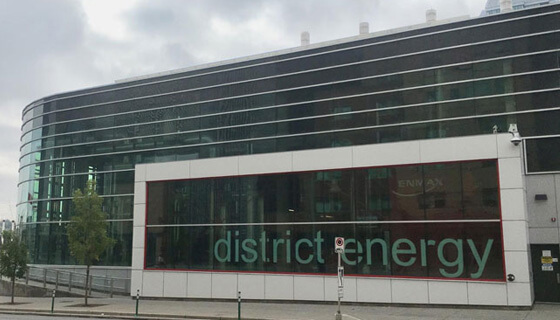
Calgary, Alberta
As the third largest municipality in Canada, Calgary is home to a young, diverse, and growing population with 40,000 new people arriving each year from across Canada and the world. Calgary is a model for strong governance thanks to a climate panel with diverse representation a highly effective and innovative public education program called EmpowerMe, and strong relationships between the City and utilities ATCO and ENMAX.
Photo Credit
The ENMAX District Energy Centre in Calgary. This is truly a local energy solution with capabilities of supplying heat for up to ten million square feet of new and existing residential and commercial properties.
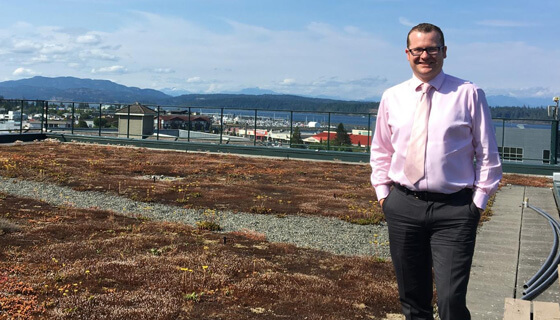
Campbell River, British Columbia
Campbell River is known worldwide as the “salmon capital of the world,” but its reputation is growing as a leader in green buildings.
The city is the home of British Columbia’s first green roof installation on an existing municipal city-hall. It is also a leader in energy-efficient building design and retrofits thanks to strong local programming and support from BC Hydro and FortisBC. The Power Down Campbell River initiative has been helping residents retrofit their homes since 2013.
Photo Credit
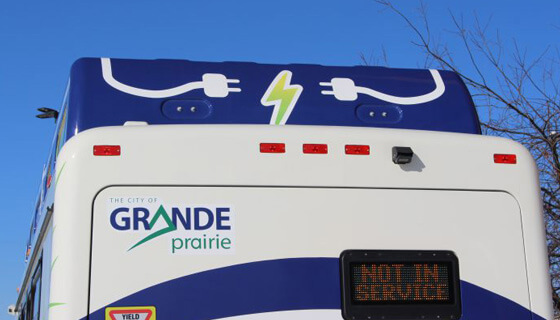
Grande Prairie, Alberta
Grande Prairie is a rapidly growing resource-based community in northwestern Alberta with a population of approximately 63,000 residents. Being a part of the Benchmark Pilot Project is well-timed as they are developing a community energy strategy that optimizes energy delivery systems with the available resources. Industry, business and residents are working to understand the benefits of a multi-faceted approach to energy consumption and the municipality is making significant investments in electric busses charged by solar power!
Photo Credit
Inuvik, Northwest Territories
The Town of Inuvik is located 200 km north of the Arctic Circle, in the beautiful and vast Mackenzie Delta, In Inuvik, the Arctic Energy Alliance works closely to offer a comprehensive suite of programs from deep energy retrofits to renewable energy projects. There are many examples of solar PV use (including a solar-powered community freezer) and biomass heating throughout the community (such as for the Inuvik Regional Hospital).
Photo Credit
The community freezer uses solar power to keep food cold in the summertime when the weather is warm and the sun is out.
One of many examples of solar panels used on buildings in Inuvik.
The wood pellet silo that feeds into the boiler used for heating at Inuvik Hospital.

London, Ontario
Over the past several years, London has witnessed growth in its manufacturing sector, diversifying to include military, aerospace, medical, and automotive parts, and food processing. London is also poised for new business growth in the areas of life sciences, technology, and digital media. Not only does London have an established district energy network and too many corporate energy efficiency projects to list, but they are also a leader in community engagement. London Hydro helps households make energy-smart choices with the My Green Button initiative. The City created this awesome video on the progress of the Community Energy Action Plan.
Photo Credit
London District Energy Plant
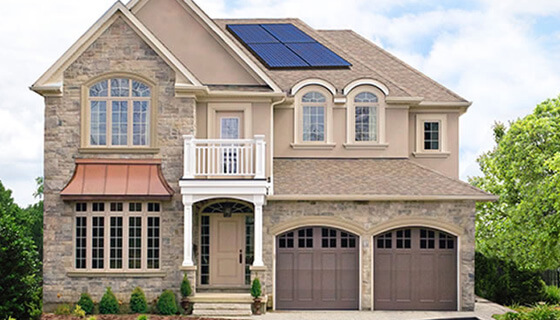
Markham, Ontario
Markham is Canada’s most diverse community and enjoys a rich heritage, outstanding community planning and services, and a vibrant local economy. Markham is developing leading-edge projects through close partnerships with Alectra, Enbridge, Markham District Energy, and other community partners. Some of the exciting projects include Power House, which tests the integration of new home energy technologies; Enbridge’s hydrogen power-to-gas project; and algae-based carbon capture connected to community’s CHP district energy system.
Photo Credit

Yellowknife, Northwest Territories
As a northern city, ensuring that workplaces and homes are well heated is essential to the well-being of the people, land, and economy in Yellowknife. Climate action, with a particular focus on energy, is high on the priority list for municipal officials, businesses and residents alike. Yellowknife has established a wood pellet biomass district energy system that won the energy category for FCM’s Sustainable Community Awards, and has extensive engagement and activities for waste management (including having a popular designated salvage area at the waste management facility a.k.a. “YKEA”) that is strongly linked to their community energy plan.
Photo Credit
Chris Vaughn, Manager, Sustainability and Solid Waste Management from the City of Yellowknife showing a city biomass boiler.
Stay tuned to the QUEST mailing list for the launch of the Smart Energy Communities Benchmark website coming this November. The Smart Energy Community Benchmarking results will show your community’s progress on the ten indicators of a Smart Energy Community. You will learn how your municipal and utility processes, policies, programs and projects compare to best practices across Canada. The website will offer a self-assessment tool, a resource library, and information on how to sign your community up for a full Benchmark assessment.
Help us spread the word to local governments, utilities, and other community stakeholders, that are advancing towards the ten indicators of smart energy.
S'inscrire to the QUEST mailing list to be the first to get access to the Smart Energy Benchmark website and tools.
S'inscrire
Rejoindre la conversation!
Inscrivez-vous pour recevoir les dernières nouvelles et mises à jour sur les événements de QUEST Canada et recevez la newsletter mensuelle de QUEST Canada.


